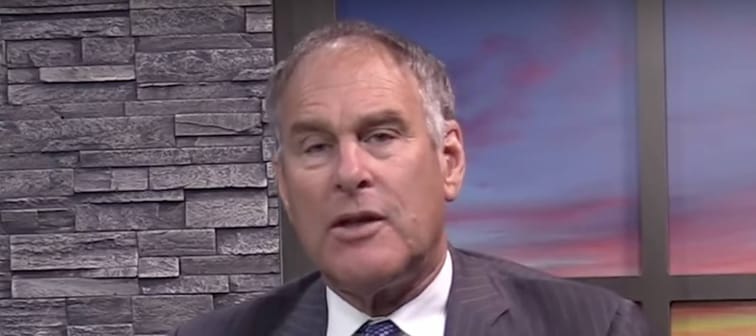Save some cash

This might seem counterintuitive since inflation erodes the purchasing power of cash holdings. But even in this environment — where you don’t earn much from savings accounts — Rule still believes in having some cash on hand.
“A circumstance where you have a dramatic reckoning, something like 2008 or 1987, or 1990, liquidity squeezes, when they occur in the market, take down the price of everything temporarily,” he explained to Stansberry Research.
“Having cash gives you the tools and the courage to take advantage of that circumstance rather than being taken advantage of.”
In other words, cash acts as dry gunpowder, allowing investors to capitalize on opportunities if and when things take a dramatic turn south.
A better online investing experience
Easy to use and powerful, Qtrade's online trading platform puts you in full control with tools and resources that help you make well-informed decisions.
Invest NowBuy a bit of gold and silver

This is an obvious one. Given central banks' money printing, Rule pointed out the importance of owning gold and silver.
And the nice part? You don’t need to own too much of it.
“If you have a circumstance where the fiat goes to hell in a handbasket, the upside you get in your gold and silver means that a small insurance premium, which is to say a small holding in physical gold and silver, offsets a very large deterioration in the purchasing power of your fiat currency.”
“So absolutely save part of your wealth in gold and silver,” Rule stressed.
Don’t forget: There are also mining companies that are well-positioned for a precious metals boom.
For instance, Wheaton Precious Metals, Pan American Silver, and Coeur Mining tend to do well with rising silver prices. Meanwhile Barrick Gold, Newmont, and Freeport-McMoRan could deliver serious returns in a gold rally.
And these days, you can build your own safe-haven portfolio just by using your spare pennies.
Own some high-quality farmland

Real estate is another classic hedge against rising inflation and interest rates.
But Rule stated that “the only sector” where he’s increasing his personal exposure to real estate is high-quality farmland — specifically in the Upper Midwest of the U.S.
“To the extent that I can buy very high-quality farmland in the U.S. Upper Midwest, I’m doing that very aggressively,” he said.
More and more investors have warmed up to the idea of farmland, and for a good reason: No matter what the economy does, people will still need to eat.
As an intrinsically valuable asset, farmland can be an ideal hedge because it has little correlation with the ups and downs of the stock market.
Between 1992 and 2020, U.S. farmland returned an average of 11% per year. Over the same time frame, the S&P 500 returned only 8%.
These days, you don’t need huge cash savings to get in on commercial real estate.
New platforms allow you to invest in fractions of commercial and multi-residential properties, with as much or as little money as you want.
Unexpected vet bills don’t have to break the bank
Life with pets is unpredictable, but there are ways to prepare for the unexpected.
Fetch Insurance offers coverage for treatment of accidents, illnesses, prescriptions drugs, emergency care and more.
Plus, their optional wellness plan covers things like routine vet trips, grooming and training costs, if you want to give your pet the all-star treatment while you protect your bank account.
Get A QuoteA ‘finer’ safe haven

If you like assets that are not subject to the ups and downs of the stock market — but can also act as a hedge against inflation — there’s one more to consider: fine art.
Contemporary artwork has outperformed the S&P 500 by a commanding 174% over the past 25 years, according to the Citi Global Art Market chart.
And it’s becoming a popular way to diversify because it’s a real physical asset with little correlation to the stock market.
On a scale of -1 to +1, with 0 representing no link at all, Citi found the correlation between contemporary art and the S&P 500 was just 0.12 during the past 25 years.
Investing in art by the likes of Banksy and Andy Warhol used to be an option only for the ultrarich, like Rule. But with a new investing platform, you can invest in iconic artworks just like Jeff Bezos and Bill Gates do.
Sponsored
Trade Smarter, Today
With CIBC Investor's Edge, kick-start your portfolio with 100 free trades and up to $4,500 cash back.








